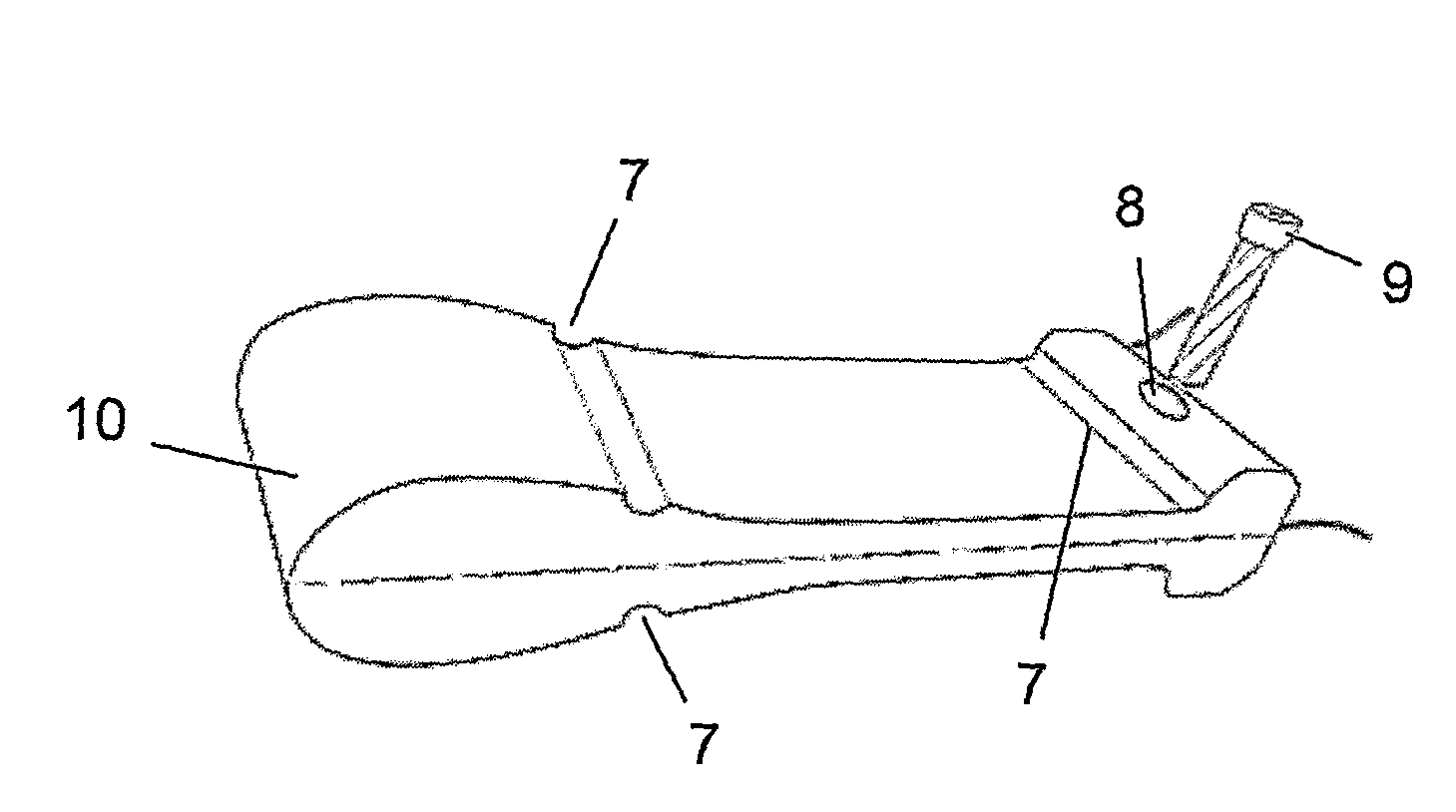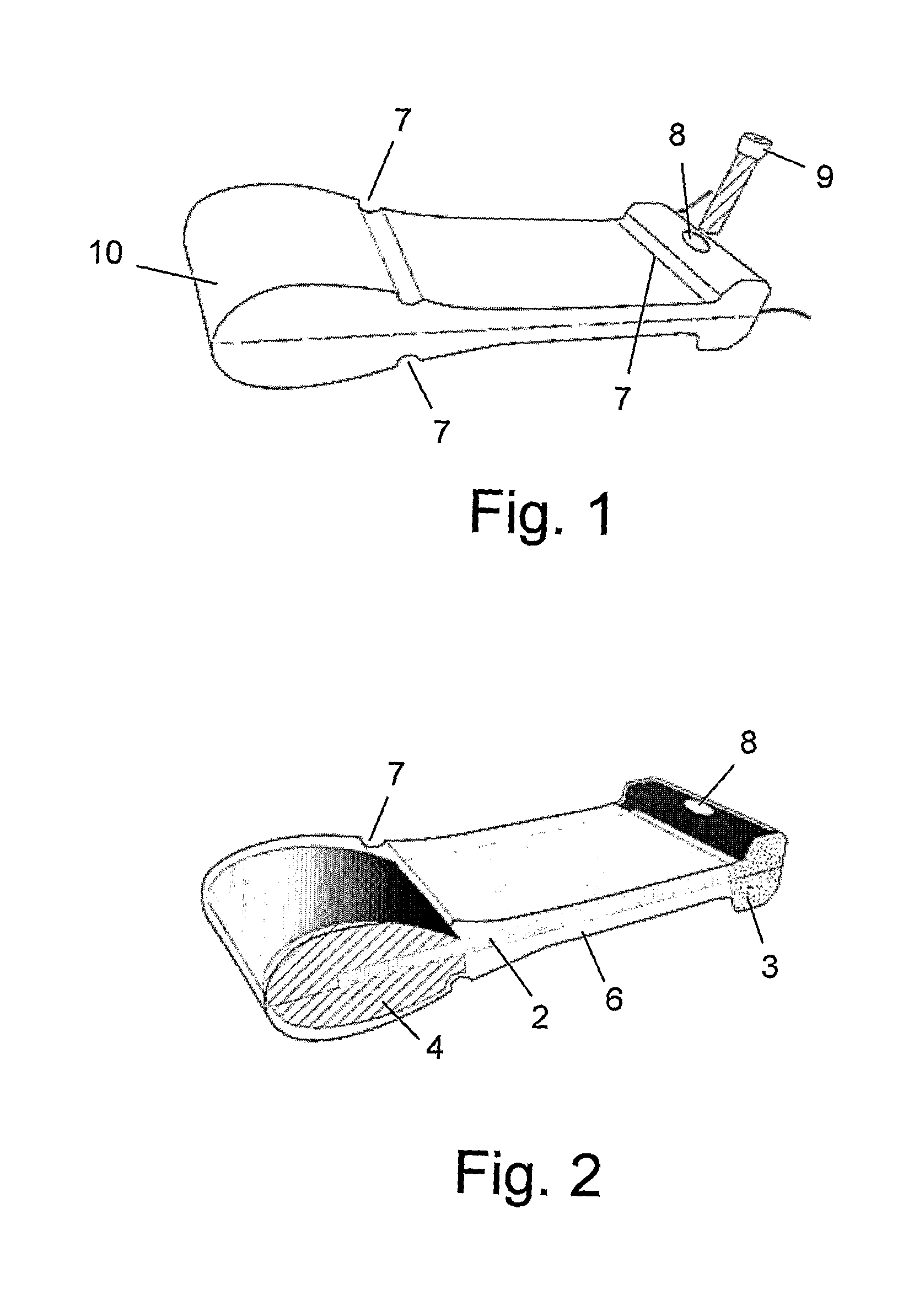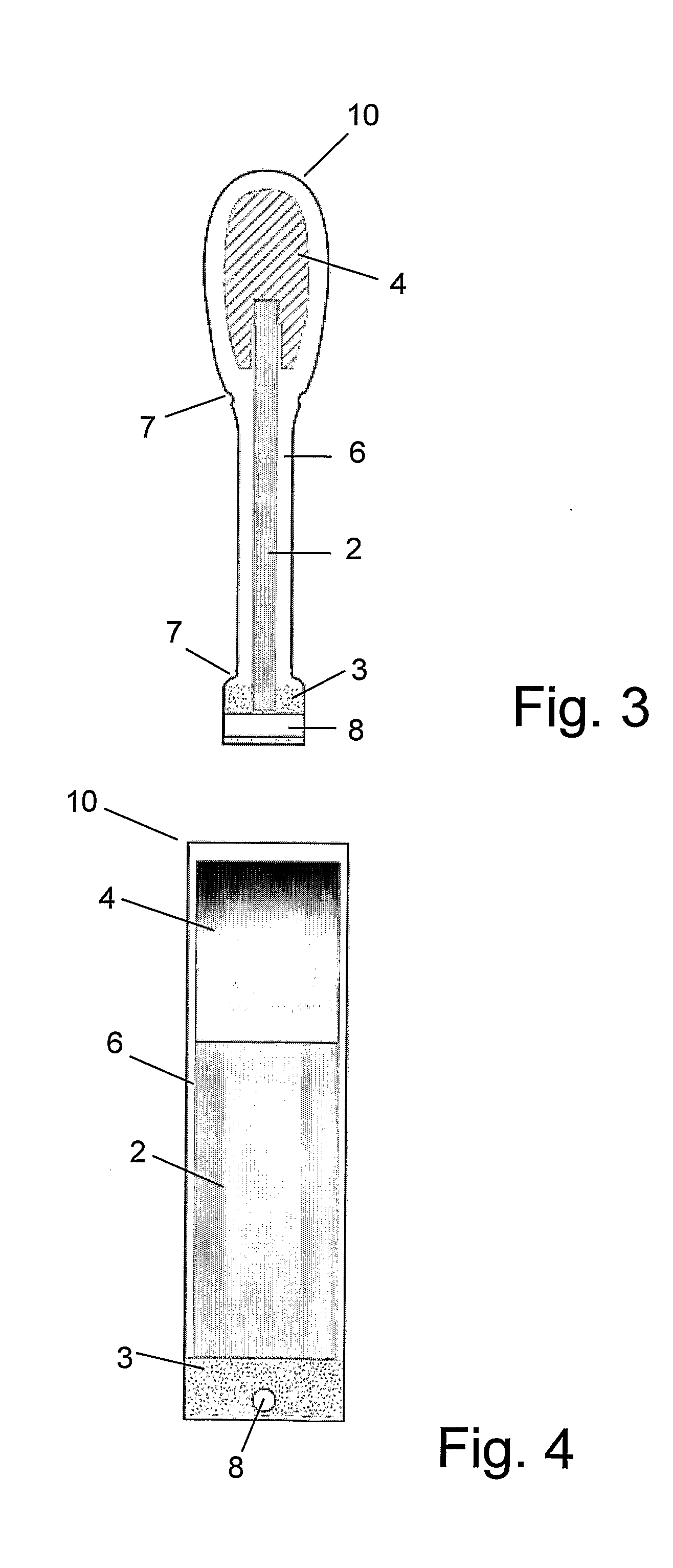Miniature Bio-Compatible Piezoelectric Transducer Apparatus
a piezoelectric transducer and biocompatible technology, applied in the field of hearing devices, can solve the problems of pain or in some cases, epidermal lesions, prior art devices that have not been proven to be satisfactory, etc., and achieve the effect of efficient sound transfer
- Summary
- Abstract
- Description
- Claims
- Application Information
AI Technical Summary
Benefits of technology
Problems solved by technology
Method used
Image
Examples
Embodiment Construction
[0030]As will be apparent to the skilled person, the transducer apparatus of the present invention may have different shapes and forms. The detailed description and related figures provided herein show, as a non-limiting example, a “tight” implementation of the invention, in which an external case carrying an internal vibrating element is formed to closely follow the contour of the internal vibrating element. As will be easily apparent to the skilled person, other shapes, such as substantially rectangular box-like casings, in which more space is provided between the vibrating element and the wall of the casing, can be provided, as well as many other different shapes, e.g., triangular, trapezoidal, elliptical, circular, double-bell shaped or dumbbell-shaped, with the larger-dimension edge being the free moving end. Such evident alternative shapes are not described herein in detail, for the sake of brevity.
[0031]Referring to FIGS. 1-12, there are shown examples of a vibrating element,...
PUM
 Login to View More
Login to View More Abstract
Description
Claims
Application Information
 Login to View More
Login to View More - R&D
- Intellectual Property
- Life Sciences
- Materials
- Tech Scout
- Unparalleled Data Quality
- Higher Quality Content
- 60% Fewer Hallucinations
Browse by: Latest US Patents, China's latest patents, Technical Efficacy Thesaurus, Application Domain, Technology Topic, Popular Technical Reports.
© 2025 PatSnap. All rights reserved.Legal|Privacy policy|Modern Slavery Act Transparency Statement|Sitemap|About US| Contact US: help@patsnap.com



